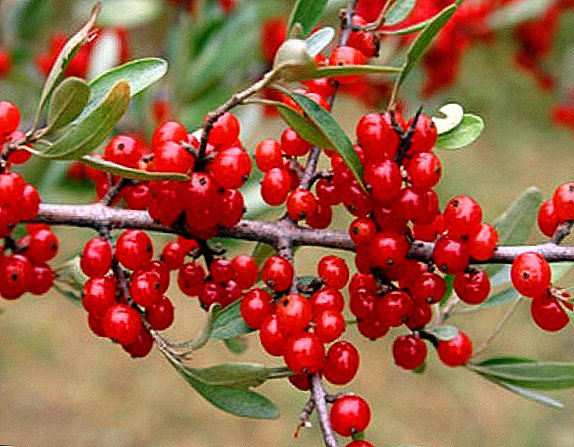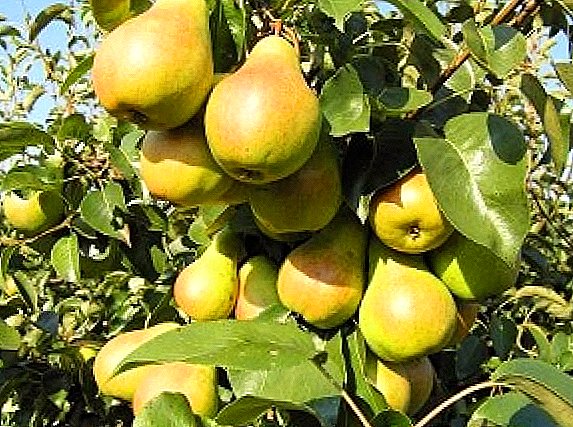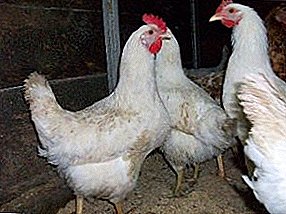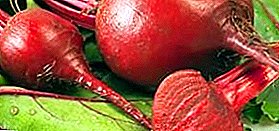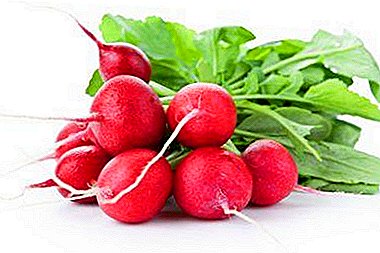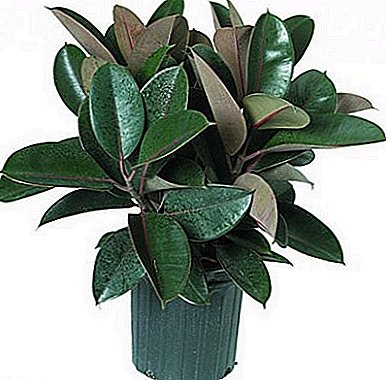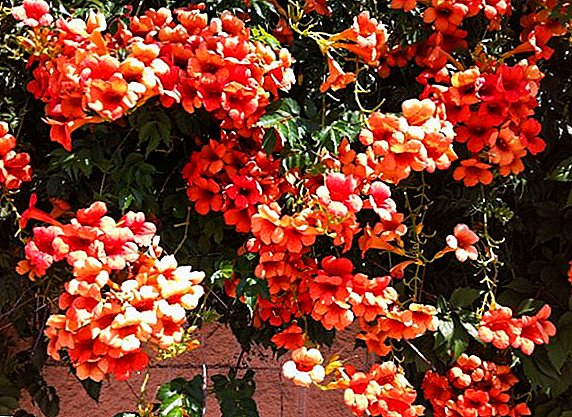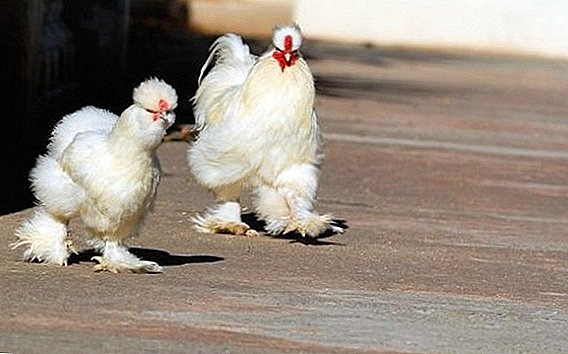 In modern poultry farming, thanks to breeding work, there are many different types of chickens. Birds with shaggy paws are very popular, because the characteristic "pants" give the bird an extraordinary look. In addition to visual appeal, shaggy birds are notable for excellent frost resistance, and many of them are best carried in the winter. Consider the features of different breeds of such chickens.
In modern poultry farming, thanks to breeding work, there are many different types of chickens. Birds with shaggy paws are very popular, because the characteristic "pants" give the bird an extraordinary look. In addition to visual appeal, shaggy birds are notable for excellent frost resistance, and many of them are best carried in the winter. Consider the features of different breeds of such chickens.
Brama
In the first half of the twentieth century, poultry breeds (named after the Indian Brahmaputra) were at the top of the list of the most popular peasant chickens that were found throughout Russia.  The breed has distinctive features that will not allow these birds to be confused with any other.
The breed has distinctive features that will not allow these birds to be confused with any other.
- Color There are several varieties of chicken colors: gray, white, brown, black, rarely partridge.
- Head. Relatively small, disproportionate to the body with a massive forehead.
- Crest. Fuzzy, located in three rows, pods.
- Feathers. Large, grow a dense layer.
- Eyes. Deep-set, bright orange.
- Beak. Yellow, strong.
- Ears. Symmetric, under the plumage imperceptible.
- Neck. Massive, long, slightly rounded.
- Torso. Volumetric, strong, muscular.
- Legs. Massive, long, densely covered with feathers.
- Tail. Large, but not long. Feathers tied up.
 These birds are considered a large bird. The weight of an adult chicken can reach 4 kg, a rooster - 5 kg. Chickens start running at 9 months of age. Egg production is 100-130 eggs per year, which is considered an average. The instinct of hatching is pronounced. The nature of chickens and roosters is extremely calm.
These birds are considered a large bird. The weight of an adult chicken can reach 4 kg, a rooster - 5 kg. Chickens start running at 9 months of age. Egg production is 100-130 eggs per year, which is considered an average. The instinct of hatching is pronounced. The nature of chickens and roosters is extremely calm.
Did you know? It is believed that chickens cluck just like that. But these birds never make distinctive sounds for no reason: for example, if they saw the owner, a dog, laid an egg, or even just went for a walk.
Chinese silk chicken
Unusual and extremely valuable Chinese silk chicken was bred in China for a long time. The breed is considered decorative, but some breeders sell meat for big money, because the main feature of this chicken is black meat. 
- Color There are black, gray, white, red, smoky species.
- Leather. Unusual black color.
- Meat. Black, rather fat, is considered a delicacy.
- Head. Relatively small, completely covered with down.
- Pooh Instead of feathers, this chicken is completely densely covered with bulky fluff.
- Eyes. Deep-set, black, under fluff almost invisible.
- Beak. White-gray color, strong, long.
- Ears. Under plumage invisible.
- Neck. Massive, flat, densely covered with down.
- Torso. Volumetric, tightly covered with "fur".
- Legs. Shaggy, over the fluff are not visible.
- Tail. Volumetric due to the large amount of fluff. Zadran up.
 These birds are very small. Chickens weigh less than 1 kg, and roosters - up to 1.5 kg. Laying eggs with a very developed nesting instinct can produce about a hundred small eggs in a year, starting at 6 months of age.
These birds are very small. Chickens weigh less than 1 kg, and roosters - up to 1.5 kg. Laying eggs with a very developed nesting instinct can produce about a hundred small eggs in a year, starting at 6 months of age.
The nature of these chickens is very devoted and peaceful. They can easily climb into the hands of the owner and even give themselves to stroke.
Did you know? Chinese silk is the only breed of chickens that is cut in order to get valuable fur.
Cochinquin
Cochinquin is truly a giant breed. Initially, this Chinese species shocked the whole of Europe with its enormous size, but today this breed has become one of the most popular, especially in Russia. 
- Color Monophonic chickens are not found, most often combine several colors at once: brown and all its shades, white, gray, black, green.
- Head. Small, not proportional to the body.
- Crest. Standing, not big.
- Feathers. Short, densely cover the whole body.
- Eyes. Rich orange, large.
- Beak. Gray, massive.
- Ears. Symmetric, under the plumage imperceptible.
- Neck. Short, volumetric, slightly rounded.
- Torso. Volumetric, densely covered with plumage.
- Legs. Massive, covered with feathers, often not visible behind it.
- Tail. Short. Feathers tied up.
 A very large bird - the weight of the female and the male can reach 5 kg. From 6 months of age, hens become beautiful chicks, producing 120 large eggs per year. Despite their awesome massiveness, they are a sociable and friendly breed. Easy to get along with other roommates.
A very large bird - the weight of the female and the male can reach 5 kg. From 6 months of age, hens become beautiful chicks, producing 120 large eggs per year. Despite their awesome massiveness, they are a sociable and friendly breed. Easy to get along with other roommates.It is interesting to get acquainted with the collections of breeds of chickens: the most unusual, the largest, red color; decorative, fighting, meat and egg.
Sultanka
Sultanka is a Turkish chicken, the first historical mention of which appeared in the XVII century. The peculiarities of these birds are white color and characteristic "whiskers" in chickens. 
- Color Exceptionally white.
- Head. Small, but looks proportionate, with small sideburns and a beard made of down.
- Crest. Large white, in the form of a down cap.
- Feathers. Long, tightly cover the body.
- Eyes. Black, big.
- Beak. Large, beige or yellow.
- Ears. Symmetric, under the plumage imperceptible.
- Neck. Long, massive. No rounding.
- Torso. Large, muscular.
- Legs. Strong, abundantly covered with feathers.
- Tail. Long, raised up.
Sultan is considered a medium breed: hens weigh up to 2 kg, roosters up to 3 kg.  Layers start their activity quite early, sometimes not reaching 6 months of age, and a small number of eggs are given per year (90-100). Snow-white birds are very friendly and extremely active, amenable to simple training in response to the call.
Layers start their activity quite early, sometimes not reaching 6 months of age, and a small number of eggs are given per year (90-100). Snow-white birds are very friendly and extremely active, amenable to simple training in response to the call.
Important! Sultan lovers love to destroy green spaces - it is better to keep them away from the garden.
Pavlovskaya breed of chickens
Pavlovian chicken got its name thanks to the village of the same name, which is located in Russia. The history of the breeding of this breed is not exactly known, however, according to historical data, its ancestors come from there.  This species is considered one of the most beautiful.
This species is considered one of the most beautiful.
- Color Birds are fiery red or brown with black scaly patches, rarely black and white.
- Head. Small, in relation to the body does not look proportional.
- Crest. Large, in the form of a tuft of standing feathers.
- Feathers. Short, completely densely cover the body.
- Eyes. Black or cherry, large.
- Beak. Large, white.
- Ears. Symmetric, under the plumage imperceptible.
- Neck. Long, strong, muscular.
- Torso. Large, massive.
- Legs. Sturdy, covered in feathers.
- Tail. Long, raised up.
 The nature of these birds indifferent, mostly walking "by themselves."
The nature of these birds indifferent, mostly walking "by themselves."Did you know? At the end of the twentieth century, the record for the value of the chicken family was raised by birds of this breed. Handsome men were sold for more than 2 million dollars.
Ushanka
The exact history of the earflaps origin is not known, because there are no historical records about this breed. However, experienced breeders and breeders believe that Pavlovsky and Orlovsky chickens are long-time ancestors of the “ears”, because the first is similar in hairiness of the paws, and the second is the characteristic beard.  The appearance of this breed is quite bright, but they are easily confused with the Ukrainian selection of earflaps. In order to determine for sure the hairy earflaps, it is necessary to examine in detail the exterior of the bird.
The appearance of this breed is quite bright, but they are easily confused with the Ukrainian selection of earflaps. In order to determine for sure the hairy earflaps, it is necessary to examine in detail the exterior of the bird.
- Color Representatives of this breed have a brown or fiery color, always with dark feathers on the tail. Small black spots on the neck or back are possible.
- Head. Small, but the beard visually increases it.
- Crest. Red, rather large, mostly lying.
- Feathers. Long, completely densely cover a body.
- Eyes. Black or red, big.
- Beak. Large, white or yellow, sharp.
- Ears. Symmetric, quite noticeable.
- Neck. Long, voluminous, muscular, has a bend.
- Torso. Large, massive.
- Legs. Strong, voluminously covered with feathers.
- Tail. Long, raised up, darker than the body (black or green).

Hatchlings with earflaps have a developed incubation instinct, they start to rush not earlier than 6 months and demonstrate excellent performance: up to 200 eggs per year.
The breed is considered egg-meat: the chicken can reach 2.5 kg of weight, and the rooster - 3-3.5 kg.
"Ears" have a good disposition. Breeders praise chickens for their friendliness and dedication to the owner.
Some breeds of chickens have tufts or even a whole hairstyle, for example, Russian crested, legbar, paduan, gudan.
Siberian pedlar
Its name is an unusual breed of chickens due to the place of its greatest distribution. It is believed that the Siberian peduncle appeared on the territory of Russia for a long time, and thanks to its frost resistance, it felt fine even in Siberia.  The appearance of the pedicle is extremely unusual, it is simply impossible to confuse it with anyone else.
The appearance of the pedicle is extremely unusual, it is simply impossible to confuse it with anyone else.
- Color Representatives of this breed have a dark color, less often gray. Feathers have the same color, but blotches of dark green shades are possible.
- Head. Large, additionally it increases the feather tuft.
- Crest. Black, standing in the form of feathers, raised up.
- Feathers. Throughout the body are short (except the tail), completely densely cover the body.
- Eyes. Black, large.
- Beak. Large, black or gray, strong.
- Ears. Symmetric, dark, quite noticeable.
- Neck. Long, has a slight bend.
- Torso. Big, toned.
- Legs. Sturdy, not heavily feathery.
- Tail. Long, raised up, black.
 Chickens start to be born at 6 months, have a wonderful incubation instinct and quite good productive indicators: 150-180 eggs per year. Chickens weigh about 2-2.5 kg, males - 3-3.5 kg. They have a rather calm character, however, roosters tend to ardently protect their families. The first fight does not start.
Chickens start to be born at 6 months, have a wonderful incubation instinct and quite good productive indicators: 150-180 eggs per year. Chickens weigh about 2-2.5 kg, males - 3-3.5 kg. They have a rather calm character, however, roosters tend to ardently protect their families. The first fight does not start.
Siberian pedal-fish can be counted among the most frost-resistant breeds of chickens.
Fireball
The Firellore, a French breed (named after the eponymous French city), was the most popular bird from which they prepared a wonderful broth. For 3 centuries, breeders have been engaged in improving the external data of birds, and therefore now in many countries around the world, a faerol is considered to be exclusively an exhibition breed of chickens. But many still appreciate the meat of these birds. 
- Color There are various colors of feathers, but the most popular are salmon and silver.
- Head. Small, has a flattened irregular shape.
- Crest. Red, small, standing.
- Feathers. Fairly short, there is a down collar around the neck.
- Eyes. Black or cherry, large.
- Beak. Large, gray or yellowish, strong.
- Ears. Symmetrical, bright, quite noticeable.
- Neck. Long, voluminous, with a bend.
- Torso. Large, voluminous.
- Legs. Strong, massive, with characteristic "pants".
- Tail. Long, voluminous, raised up.
 The hen starts to sweep at the age of 6 months, however the condition for this is the length of the daylight hours for at least 13 hours (they also splendidly in winter).
The hen starts to sweep at the age of 6 months, however the condition for this is the length of the daylight hours for at least 13 hours (they also splendidly in winter).They have a good incubation instinct and produce about 150-180 testicles per year. Since chickens are considered meaty, the chicken weighs 3–3.5 kg, and the rooster weighs 3–4 kg.  The birds of this breed are rather calm, inquisitive. Often they can stand in one place and just watch the world around them.
The birds of this breed are rather calm, inquisitive. Often they can stand in one place and just watch the world around them.
Important! To improve performance, experienced breeders recommend keeping this breed on their own, separate from other birds.
So, birds with shaggy legs can refer to both egg, meat, mixed form, and to decorative chickens, despite the fact that they have excellent meat quality. The thing is that breeders have spent not one century on the breeding of such breeds, and the result is so pleasing to the eye that it is unreasonable to breed them only for meat.


